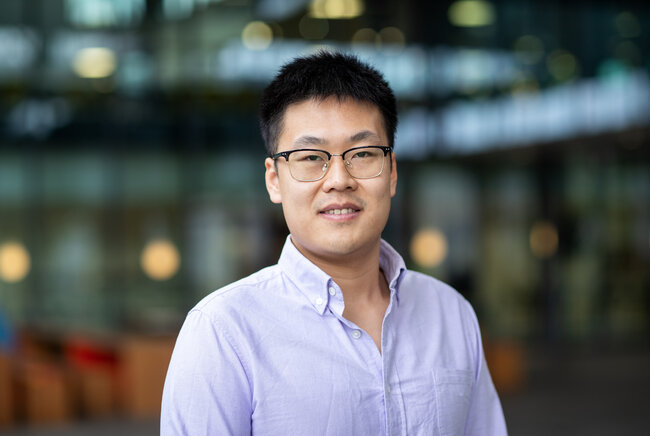Integrated optical isolators and circulators on an InP membrane platform
Rui Ma defended his PhD thesis at the department of Electrical Engineering on December 20th.

For his PhD research, Rui Ma demonstrated integrated optical isolators and circulators, with important functions, including the ability for co-integration with passive and active photonic components, high optical isolation ratio, low insertion loss, and broadband operation. The results open up new opportunities in photonic integrated circuits (PICs).
The first integrated circuit (IC) chip was demonstrated in 1960. Since then, the underlying semiconductor industry has developed into a multi-hundred-billion-dollar industry. Following in the footsteps of the IC is the development of photonic integrated circuits (PIC), which use photons instead of electrons. PICs provide many benefits in terms of size, weight, power, and cost, like the ongoing miniaturization of electronics, otherwise known as Moore’s Law.
Undesired reflections
In PICs, semiconductor lasers are one of the most important building blocks, as they generate light with high spectral purity. However, as the number of elements increases, the potential for undesired reflections in the PIC also increase. The behavior of semiconductor lasers can be significantly deteriorated because of the unwanted reflections.
Integrated optical isolators and circulators
Optical isolators and circulators are nonreciprocal devices that allow for the unidirectional propagation of light. Conventionally, bulk optical isolators and circulators are placed between laser modules and other devices to avoid reflections. However, such bulk devices are equipped in module level, which results in a significant proportion of volume and package cost. It is crucial to develop integrated optical isolators and circulators as the integration density and complexity of PICs are increasing rapidly.
Larger scale integration
In this thesis, integrated optical isolators and circulators, with important functions, including the ability for co-integration with passive and active photonic components, high optical isolation ratio, low insertion loss, and broadband operation, are demonstrated. The developments and results presented in this thesis open up new opportunities in PICs for optical transmitters, wavelength division multiplexing networks, optical coherence tomography systems, and optical sensor interrogators. They are also promising for larger scale integration in PICs.
Title of PhD thesis: “Integrated optical isolators and circulators on an InP membrane platform.” Supervisor: Jos van der Tol